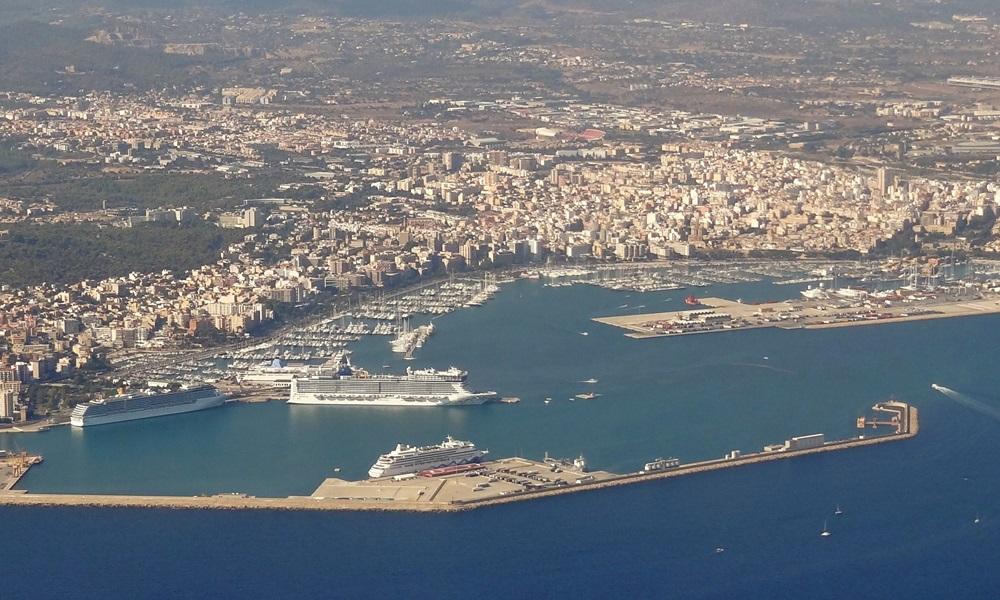Mallorcan campaigners in Palma called for the introduction of daily fee of EUR 5 to be paid by cruisers to the busy port, plus a 2-liner-per-day limit on cruise vessels docking in the port city.
Fins Aqui Hem Arribat campaign group, which comprises concerned environmental groups and local residents, presented a document with 5 concrete measures to address ongoing challenges that mass tourism brought to the region. The collective argued that government bodies lacked the initiative and drive to reduce the impact that was having on local communities.

This comes a month after the same group protested the arrival of Symphony of the Seas to the port.
Group’s spokesperson, Jaume Adrover, proposed the creation of ECA (Controlled Emission Zone), as already exists in Baltic Sea, North Sea and English Channel. This would require cruise companies to change to less environmentally damaging, but more expensive fuel, in attempt to improve air quality.
Further request for transparency was made to Port Authority regarding the data collected on air quality, the use of water and the treatment of waste on ships. The group claimed they had not had access to the data since 2016.
The number of cruisers arriving in the ports of Balearic Islands has grown by 134.6% in the first quarter of the year, reaching 174,756 travelers, according to data from Port of Spain. Campaigners claimed that on 1 day alone in 2018, seven liners arrived at the port carrying around 5,000 people.
The Balearic Islands welcomed a total of 45 cruises during the first 3 months of 2018, 80% more than during the first quarter of 2017.
The new proposal followed controversy regarding the recent 100% increase in sustainable tourism tax imposed on Balearic Islands' visitors, which took effect from May 1 and runs through October 31. The tax will be used to fund conservation and environmental initiatives, historic and cultural heritage, as well as sustainable tourism, such as training with emphasis put on low-season employment.